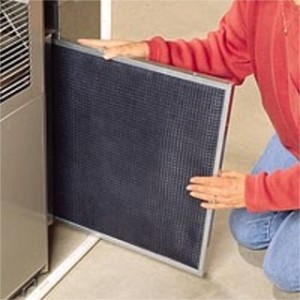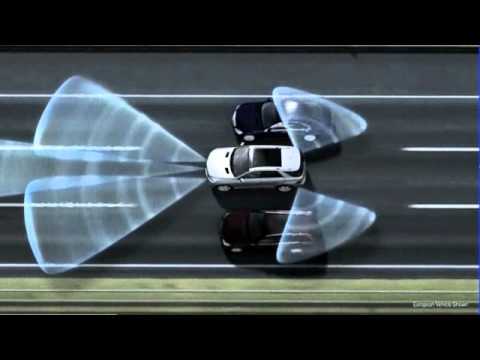
by Flagship Staff | Nov 10, 2017 | Blog
With the end of daylight savings time, it will be more difficult to have fun in the sun. During the week, our light will now have to be enjoyed from an office, factory, or school window. However, that doesn’t mean you can’t remain active outdoors.
Recently, I rode to work early in the morning when it was still dark. I was surprised at the number of pedestrians walking on our local biking/walking trail who weren’t wearing lights or reflective clothing. The pedestrians ranged in age from young schoolchildren to the elderly. Fortunately, I had a very bright headlight, so I could see the pedestrians and adjust my speed and path accordingly. A lack of reflective clothing or lights puts pedestrians at risk.
According to the National Highway Traffic Safety Administration (NHTSA), 4,743 pedestrians and 726 bicyclists were killed in crashes with motor vehicles in 2012. In addition, 69% of accidents occur in the dark.
Here are some safety tips to keep you and your family safe after dark.
1. Wear reflective clothing. Many different kinds of reflective materials and clothing are available and vary in price. From vests and wristbands, to reflective tape, all can help you remain visible when you’re outdoors after dark.
2. Buy basic reflectors for your kids. If your kids walk to school, buy some inexpensive reflectors to attach to their backpacks. While this may not be cool, a reflector can significantly increase their chance of being seen. Also, consider buying reflective zipper tags.
3. Invest in a quality headlight and taillight. If you plan to ride your bike to work or for pleasure, make sure you have a quality headlight and taillight. You may purchase them individually or as a set, and they range in price. If you’re riding in the city where you’re aided by streetlights, a headlight with a flasher mode is important. If you ride on a bike trail, the amount of lumens your headlight produces is critical. What’s a lumen? Simply put, the more lumens, the brighter the light.
When I bought my first light, I bought a set. The headlight was 22 lumens with a flash mode, high beam, and low beam. The taillight had four LED lights that provide visibility up to 4,000 feet. What I quickly learned is that the headlight was great for city riding, but wasn’t bright enough for riding on a dark bike trail. Therefore, based on a recommendation from a friend, I bought a headlight that produces 220 lumens. This light is good for dark trail riding.
4. Walk with a flashlight. Frequent injuries occur because of tripping or falling on uneven or cracked sidewalks. In addition, if you’re walking with a pet, a flashlight can help prevent your pet from stepping on a sharp object.
5. Light up your pet. Taking your dog for a nighttime walk isn’t just enjoyable, it’s often necessary. Collars and leashes that are reflective or light up are available. A light-up leash is great if you walk after dark and encounter other pedestrians.
6. Resist wearing headphones. While the trend is to wear headphones while walking or running, it’s better if you don’t wear them. This will keep you more aware of your surroundings and can help you sense danger.
7. Walk against traffic flow. If possible, always walk on the sidewalk; however, if a sidewalk isn’t available, walk against the flow of traffic. This will help you see what’s coming toward you and will help you get out of the way if it appears you’re not visible to the driver. A bicyclist, on the other hand, should never go against the flow of traffic.

by Flagship Staff | Nov 7, 2017 | Blog
Shorter days, blowing leaves, and cooler temperatures are reminders that winter is coming. If you’re like me, you’re scrambling to get your “To Do” list completed. Raking leaves, painting house trim, and cleaning out flower beds are just a few of the tasks I have remaining.
In addition to outdoor activities, don’t forget about the items inside your home that need to be inspected before the snow flies. If you haven’t had your furnace inspected, now is the time to schedule that appointment. To learn more about the benefits on an inspection, visit my blog “Four benefits of a furnace inspection.”
It’s also the time to change your furnace filter. Do you change your furnace filter according to the recommended interval? Do you buy the cheapest filter you can? Do you know what a furnace filter is and how it works?
The purpose of a furnace filter is to keep contaminants out of your blower fan. Contaminants include hair, pet dander, dust, allergens, and other things that are sucked into your air return ducts.
Here is some information on selecting and installing the right replacement furnace filter for your home and family.
1. Many different shapes and sizes. When you arrive at the section in the store where furnace filters are sold, you’ll be out of luck if you don’t know the appropriate size. Especially in bigger stores, filter size and selection can be overwhelming, preventing you from taking a guess.
The size of a furnace filter is based on width, length, and thickness. For example, the size of my furnace filter is 16”x20”x1”. If you recently purchased a new home or had a new furnace installed, check your owner’s manual to determine the correct size. A filter that’s the wrong size won’t fit or stay in place after installation.
After you figure out the correct size, consider writing the number on your furnace filter cover so you can see the size at a glance.
2. Determine the right filter for your household. When it comes to purchasing furnace filters, there are a few options to consider. The options are:
– Flat disposable filters. These filters are very cheap and are made of fiberglass. Their job is to protect your HVAC system from large dust particles.
– Pleated filters. These filters are made of polyester or cotton paper sheets, which traps more particles/contaminants.
– High Efficiency Particulate Air (HEPA filters). These filters are the best at removing the most particles from the air flowing through your HVAC system. However, due to their thickness, it may cause your system to work harder. Before buying this type of filter, check with your owner’s manual to see if this type of filter can be used. If you suffer from severe allergies, you may want to have a separate air filtration system installed in your home.
Lastly, make sure you check out the Minimum Efficiency Reporting Value (MERV). The scale ranges from 1 to 16. The higher the number, the greater the percentage of contaminants that are captured with each pass.
3. Installation. After you have selected the appropriate filter for your home, it’s time to install it. Make sure your thermostat is turned off so the furnace is not running. Also, consider shutting off the power. My furnace has a switch that I can turn off while doing the installation. If yours doesn’t have a switch, consider turning off the power at your circuit breaker.
4. Point the arrow in the right direction. You’ll find an arrow on the filter frame. Always place the arrow facing towards the furnace.
5. Replacing your filter. For maximum effectiveness, experts recommend you change your filter once every three months. You may want to consider changing it more frequently if you’re:
– Remodeling
– A pet owner or
– A smoker.
To learn more, check out Home Depot’s “Air Filters Buying Guide”.
Do you have any tips you’d like to share? I’d love to hear your thoughts; please share them in the box below.

by Flagship Staff | Oct 30, 2017 | Blog
Before you know it, kids in costumes will be roaming your neighborhood on a mission to fill their bags with goodies. While this is a fun tradition, it’s important to keep your home and yard safe so your Halloween visitors stay safe, too.
Here some tips to keep neighborhood trick-or-treaters safe.
1. Tighten lose handrails and floorboards. If trick or treaters will be going up stairs to your front door, make sure hand rails are secured and loose floorboards are tightened. Kids wearing costumes may have trouble moving up and down the stairs and will rely on a handrail. In addition, if there are pumpkins or other decorations on your stairs or porch, it may be wise to remove them.
2. Remove low hanging tree branches. Make sure any trees that are close to your sidewalk or driveway are adequately pruned so the ghosts and goblins can safely navigate.
3. Mark raised or uneven surfaces. In colder climates, winter weather wreaks havoc on driveways and sidewalks. If concrete surfaces in and around your yard are raised, mark them with florescent paint so little princesses don’t trip. If uneven pavers lead up to your front door, rope off the section that could cause them to trip and fall.
4. Remove yard debris. Cold temperatures and strong winds or rain can take leaves off trees in a hurry so rake up those leaves and remove yard debris. The shortest route to your front door may be through your yard. Wet leaves, tree branches, and decorative items can be hazardous to a Storm Trooper’s health.
5. Light up your property. If your community’s trick-or-treat hours are after daylight, make sure your outside lights are working. Now is a good time to replace burned out bulbs. Consider using even brighter bulbs, as long as they meet the recommended wattage. Don’t rely on magical wands or light sabers to light on your property.
6. Keep your pets in a safe place. The constant ringing of the doorbell and the large number of visitors may stress out your pet. Keep pets in a bedroom, away from all the noise and commotion. And don’t forget: Chocolate can be deadly to pets!
Do you have any tips you’d like to share? I’d love to hear your thoughts; please share them in the box below.

by Flagship Staff | Oct 23, 2017 | Blog
This time of year, a trip to the pumpkin farm is a must for many people. Whether it’s a field trip for school or a weekend trip with family and friends, there’s always plenty to do.
Today’s pumpkin farms are even more exciting than when my parents took my sister and me. Our adventure was journeying through the pumpkin patch looking for the perfect one and cutting it off the vine. Fast forward to today and kids can enjoy corn mazes, bounce houses, haunted houses, pumpkin cannons, and petting zoos.
Unfortunately, for some families, a great day at the pumpkin farm leads to sick kids. Many farms have petting zoos and concession stands. The great thing about the concession stands is they sell a variety of food and drinks. However, if your kids forget to wash their hands after spending time with the animals, their tummies might get upset.
Here are some tips to keep your family healthy and safe the next time you visit your local pumpkin farm.
1. Hand sanitizer is essential. Take along a bottle of hand sanitizer. Apply the hand sanitizer after you leave the animal petting and feeding area. Apply it again before eating.
2. Visit hand washing stations. Some farms have hand washing stations. If the farm you’re visiting has them, make sure to stop by after visiting with the animals and before eating your lunch. While hand sanitizer is a convenient alternative, washing your hands with soap and water is best.
3. Keep your picnic lunch in the car. Many families load up their stroller or wagons with all the essentials for the day and head out on their journey. It’s best to keep your food and beverages out of the animal areas. Consider keeping your food and beverages in the car until your family is ready to take a break. Don’t forget ice!
4. Park the stroller. Instead of taking your stroller into the animal area, look for the stroller parking lot and park it. This will help keep germs from contaminating the stroller, bottles, pacifiers, and other items you have.
5. Supervise your children. When my kids were young, I made numerous trips to the pumpkin farm with my family and friends. There’s plenty of fun and excitement for people of all ages. Do your best to stay focused and keep an eye on your kids. Especially small children who are prone to touching their face and putting their hands in their mouth.
6. Respect the animals. Most of the animals are probably used to the commotion and love having visitors. However, here are a few things your kids should know.
– Approach slowly.
– Approach with their hand outstretched so the animals can smell them.
– Talk softly.
– Pet the animal(s) gently.
– If feeding time occurs while you’re visiting, stay out of the animal’s way. Like us, they love their food.
Do you have any information you’d like to share? I’d love to hear from you. Please share them in the comment box below.
Sources:
https://www.cdc.gov/Features/AnimalExhibits/

by Flagship Staff | Oct 16, 2017 | Blog
Do you like the new car smell or the shine of new paint? Buying a car can be exciting and stressful at the same time. Negotiations and paperwork can lead to many hours spent at a car dealership. Learning about the new technology and safety features available on cars today may require even more time at the dealership. Based on your insurance company, discounts may be available for these new safety features.
Here is a list of new safety features/systems that may be in your next car.
Forward Crash Avoidance – We’ve all been in a situation where traffic comes to a sudden stop or we approach a car too quickly. This system helps prevent those situations by alerting you when your vehicle is getting close to another auto or object. The system may automatically cause your car to brake in order to avoid the collision.
Lane Departure – Fatigue or distractions can cause you to inadvertently stray across lane markings. A lane departure warning system alerts you if this happens when your turn signal is not activated.
Blind Spot Monitoring – If you drive through rush hour traffic on a regular basis, changing lanes can be difficult. A blind spot monitoring system alerts you to the presence of an auto, or other object, in the vehicle’s blind spot.
Backup Warning System – Sadly, we’ve all heard of the stories of small children injured or killed by a vehicle backing up. By 2018, all new vehicles sold in the U.S. will have these systems installed. These systems are comprised of sensors and/or cameras that alert the driver of objects located behind the vehicle. These systems may also include an alert when traffic is approaching the vehicle from the side. These systems may or may not include automatic braking functionality.
Adaptive Headlights – As we approach fall, deer hits significantly increase. Adaptive headlights follow the path of the vehicle, adjusting the beam to the curve of the road, as well as the speed and steering angle of the auto. These new headlights may help spot animals that dart out onto the road. Please note: Daytime running lights or automatic on/off headlight features are different from adaptive headlights, and do not qualify for a discount.
Driver Fatigue Sensing System – Drowsy driving is a problem in the United States, which often has tragic results. According to the National Highway Traffic Safety Administration, in 2013 drowsy driving was responsible for approximately:
72,000 crashes;
44,000 injuries; and
800 deaths.
This system will monitor driver steering patterns and other behaviors to detect a lack of attention and/or potential drowsiness. The driver is typically alerted by vibrations in the steering wheel or seat, or with audible warnings.
Please remember these discounts vary by coverage and a maximum vehicle discount is applicable based on the number and combination of discounts. Talk to your independent insurance agent to see if your car qualifies.
Do you have any tips you’d like to share? I’d love to hear your thoughts; please share them in the box below.
Source:
https://www.cdc.gov/features/dsdrowsydriving/index.html

by Flagship Staff | Oct 9, 2017 | Blog
October is Fire Prevention Month. Each year, an average of 370,000 reported home fires result in $6.9 billion in damages. When you add candle fires to that total, it translates to an average of 42 calls a day for a typical fire department!
At this time of year, I typically burn more candles. There’s nothing like walking into my home and smelling pumpkin spice, evergreen, or best of all, baked sugar cookies.
As good as they smell, however, candles can be dangerous, especially if you’re not careful. If you like to burn candles during these colder months and holidays, please keep these important safety tips in mind.
1. Keep candles away from children and pets: While candles look nice on the coffee table and add ambiance to your living room, a passing child or wagging tail can easily tip them over.
2. Keep matches and lighters in a safe place: Lighting materials should be stored up high and out of sight in a kitchen cupboard, pantry, or even a closet. When I was younger, my neighborhood friends and I were fascinated with fire. Fortunately, we never caused any significant fire damage to our homes … but we did come close.
3. Avoid using candles in the bedroom: Approximately one-third of candle fires start in a bedroom and one-half of fire deaths happen between midnight and 6:00 am.
4. Have several candle holders on hand: Candles come in many shapes and sizes so you should have the right-size holder for the candles you like to burn. And it’s important to make sure candle holders are placed on durable heat-resistant surfaces.
5. Toss the candle if it’s two inches or less: Replacing a candle more frequently costs far less than replacing your home. Don’t let a candle burn to close to the holder.
6. Avoid using water to extinguish the candle: Hot wax can splatter in all directions if doused with water. And the temperature change could cause a glass container to crack or break. Consider using a snuffer to extinguish the candle.
7. Never use candles during a power outage or as a night light: Flashlights, or other battery powered lights, are much safer than candles. Night lights are also much safer and fairly inexpensive.
8. Always keep an eye on the candle: Don’t leave a candle in an unattended room for a significant period of time. A few years ago an entire apartment complex was destroyed here in West Bend when a candle was left unattended.
9. Always follow the manufacturer’s safety recommendations: Manufacturers want you to enjoy their candles so follow their recommendations.
10. Use common sense: Make sure the area around your candle is free of clutter. Also watch for sporadic airflow around the candle which can cause the flame to shift direction. And always make sure the candle is at least 12 inches away from other household items that can burn.
If there is a fire at your home, make sure you and your family get out right away! When everyone is safe, call for help. Never return to a burning home for any reason.
Page 23 of 35« First«...10...2122232425...30...»Last »






